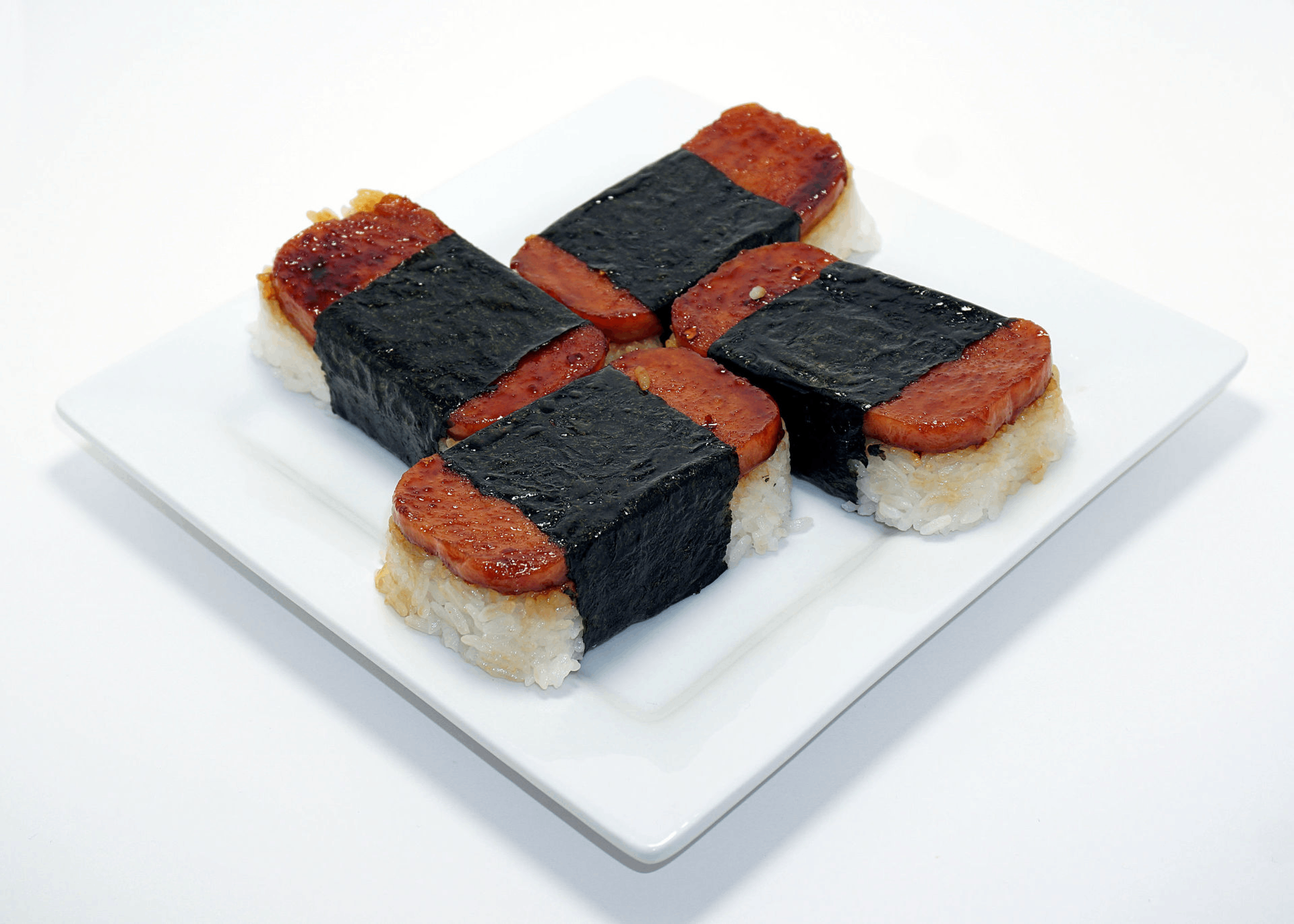How Hawaii Fell in Love with SPAM
Peruse enough restaurant menus in Hawaii and you might notice a surprising ingredient among the pork, pineapple, and poi. Hawaiians consume more SPAM per capita than any other US state—a whopping five cans per person each year, totaling more than 7 million cans annually. There’s a cookbook dedicated to SPAM—Ann Kondo Corum’s Hawaii’s Spam Cookbook—an annual, two-week long block party celebrating SPAM each April, and even special SPAM flavors that you can’t find outside of Hawaii.

https://en.wikipedia.org/wiki/Spam_musubi#/media/File:Homemade_Spam_Musubi.jpg
So how did an island chain renowned for its natural splendor end up falling in love with the most processed meat product this side of Steak-umm? Hormel’s “Spiced Ham” hit shelves on the mainland in 1936 as the nation was in the throes of the Great Depression, offering an affordable protein source to cash-strapped families. But SPAM didn’t make its way to the islands until the 1940s, when the U.S. military increased its presence in Hawaii and found in SPAM a cost-effective way to feed American G.I.’s.
Over the past 80 years, our chefs have put their own spin on SPAM, fusing it with other cuisines in true Hawaiian fashion. The most popular SPAM dish by far is musubi—basically, SPAM sushi. A slice of SPAM is caramelized in a sweet, savory sauce, placed atop a rice brick, and held in place by a seaweed belt. From dive bars to haute cuisine, restaurants of all kinds serve up their version of SPAM musubi. Even 7-Eleven gets in on the action, selling more than 70,000 of these handheld snacks each week.
Outside of military bases, SPAM filled a niche in Hawaiian cuisine. At 2,400 miles from the mainland United States, Hawaii is the most isolated population center on Earth. Importing food is pricey, especially when the food is perishable and requires refrigeration or other special handling. SPAM, on the other hand, is shelf-stable, cheap, and compact, making it the perfect answer to Hawaii’s isolation.
You’ll also find SPAM served with eggs for breakfast, chopped in fried rice, or sliced in siamin soup, which is a popular dish similar to ramen.
If we’ve sold you on SPAM, you’re in luck: Waikiki is one of Hawaii’s biggest musubi hotspots. Early birds can pop over to Komedokoro M’s in Eaton Square, where SPAM flies off the shelves Monday-Saturday from 10am until 2pm—or until they run out, sometimes within the first half-hour of opening. For a variation on musubi, check out Ma’Ona Musubi. They specialize in onigirazu, large square sandwiches with rice cakes holding delectable slices of SPAM. Waikiki Foodhall’s Pork Tamago Onigiri—known by locals as PoTama—is also a great option. There, you’ll find classic musubi dressed up with unusual ingredients like bitter melon.
Written by Chris, a local expert guide for Waikiki Crawling. A historian on the lam from the world of academia, Chris enjoys gardening, hiking, and playing at open mic nights after one too many beers. Want to learn more about Honolulu’s hidden history? Join us on an Aloha Pub Crawl!
